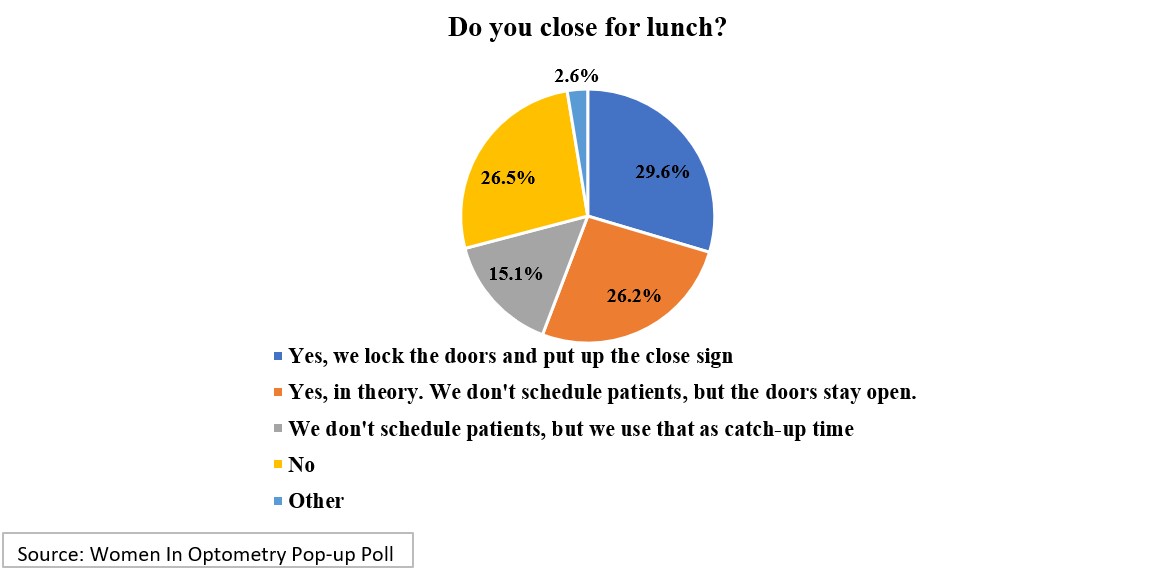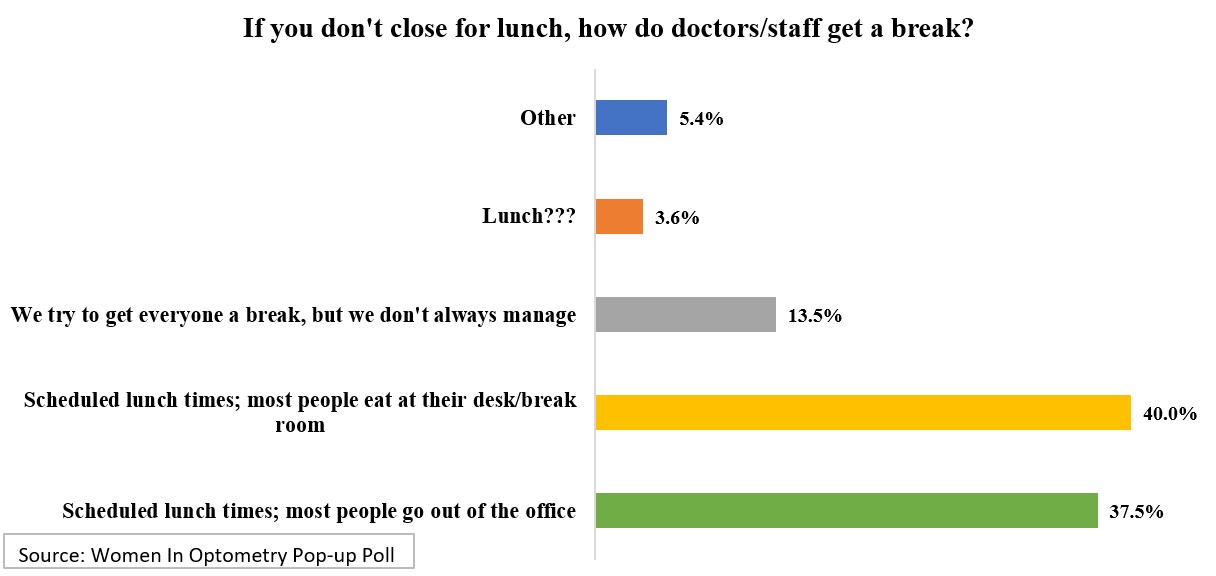By Mark Wright, OD, FCOVD,
and Carole Burns, OD, FCOVD

March 16, 2022
Closing for lunch can offer a nice midday break to your employees, but at what cost to patient access and profitability? Here are the results of a recent survey on how many of our readers close for lunch, along with our tips to help you decide whether you should close for lunch.
Not all hours in a workday are equal in value to the practice. A core concept in practice management is “make it easy to do business with us.” The harder it is to do business with your practice, the more likely patients will go somewhere else where it is easier. Retail optometry loves that independent optometry is closed evenings and weekends. Those are the times retail optometry does the majority of their business.
So, what about lunch time? Patients prefer to run errands during their lunchtime. From a patient’s perspective, it’s easier to do business with an eyecare practice that is open during lunch than closed during lunch.
Here are the results from the question, “Do you close for lunch?”

Here are the responses to the question, “If you don’t close for lunch, how do doctors/staff get a break”:

Because of the problems with hiring people that currently exist, many practices have shifted from being patient-centric (practice decisions are made from the perspective of what is best for patients) to being staff-centric (practice decisions are made from the perspective of what is best for staff). Many times, this shift wasn’t a conscious decision, it just happened out of necessity – the necessity of keeping team members from leaving your practice to go work somewhere else.
Other Articles to Explore
Here are a few examples to consider:
• Your staff comes to the office manager and says they really enjoy having lunch together, so they would like to close the office from 12-1 p.m every day in order to build a better team.
• Because sometimes patient care runs longer than expected, staff is asking that strategic patient care appointments be removed from the schedule.
• Your team comes to the office manager and states that they want a full lunch hour, so they can run their errands.
How you make decisions in these examples shows whether you are a patient-centric or staff-centric practice.
Just like we need to think about work-life balance, we also need to think about patient-staff balance. This is not an easy formula to work out because there is no perfect answer. In fact, this is a formula you will work on for your entire career.
One last thought. It’s not as simple as just making a decision and moving forward. We can’t forget the legal issues here. You must follow all laws when making work-related decisions. Therefore, be sure to seek legal advice.

























